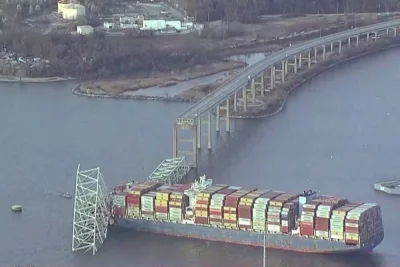Concerns that rising sea levels and extreme weather may have played a role in the collapse of a 12-storey apartment tower near Miami Beach last month could have far-reaching consequences for other coastal cities and buildings around the world.
With investigations ongoing, it is too early to say what caused the oceanfront Champlain Towers South building to crumble, killing 97 people, but climatologists and other experts have suggested possible links to the effects of climate change.
“Champlain Towers just underlined the urgency about how we need to start thinking about our buildings in coastal regions,” Sonia Chao, who studies the urban resilience of coastal cities at the University of Miami, said.
“Do we revise these codes to ensure that buildings can withstand the shocks of climate over time? Or do we ignore them now and pretend like it doesn’t matter?,” she said, adding that climate stressors were only one of several possible causes.
Shortly after the building’s collapse, officials released a 2018 engineering report that warned of “major structural damage” to the 40-year-old complex, which is now the focal point of several inquiries, including a grand jury examination.
The report noted “abundant” cracking in the foundation of the building’s parking garage and prompted plans for a multi-million dollar repair project, which was due to start soon.
Residents had also complained about the recent construction of a luxury high-rise condominium that bordered Champlain Towers South, raising concerns about vibrations.
But investigators working to pinpoint the causes of the disaster will also be considering climate-linked issues in the country’s most hurricane-prone state.
Hurricane Andrew, which battered the Miami region in 1992 — about a decade after the Champlain Towers were constructed, pushed Florida officials to create some of the toughest storm-resistant building codes in the country.
Over the last two decades, however, coastal communities in Miami and South Florida have seen a significant rise in sea levels, with some estimates as high as 3.9 inches (9.9cm) between 2000 and 2017.
By 2040, sea levels are expected to be 10-17 inches (25-43cm) higher than they were in 2000, according to Miami-Dade County estimates.
More than $3bn worth of property in Miami could be lost to daily tidal flooding by then without action to reduce the threat, according to a 2020 report by the Urban Policy Institute.
The study projected that property losses in the state would rise to $23.5bn by 2070.
Beyond Miami, roughly 9% of the US coastline is also vulnerable to saltwater intrusion, which can cause the corrosion of reinforced concrete structures like the Champlain Towers, according to a 2016 study in the academic journal Science.
In the 1990s, when the Champlain Towers were built, the corrosion risks posed by saltwater intrusion were not yet known, said Zhong-Ren Peng, who directs research on environmental resilience at the University of Florida.
But saltwater in a building’s foundation can seep into the steel bars reinforcing it, Peng said, which can lead to corrosion, weakness and cracking of surrounding concrete.
“When those buildings were built, we didn’t have a new building code and the knowledge about the potential problems of salt water intrusion,” Peng said.
“It would be very prudent to have a thorough inspection and audit of all of those buildings around coastal areas.”
Peng and others said the tower collapse was likely to prompt authorities to update building codes, as they did after Hurricane Andrew. – Thomson Reuters Foundation

Viewpoint


